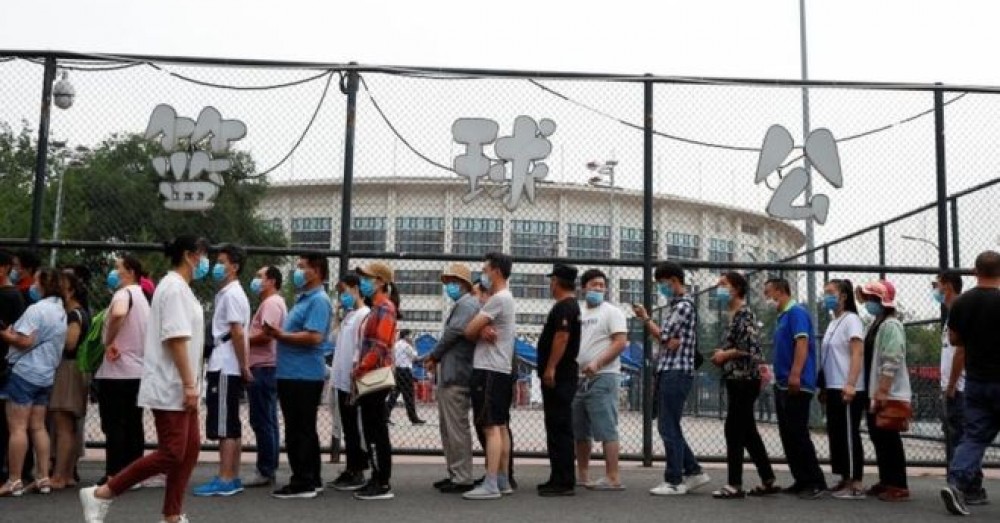Millions of people in Beijing are living under renewed restrictions, as a spike in virus cases continues.
The city reported another 31 cases on Wednesday, bringing the total to 137 in the past week.
Before the recent spike, the Chinese capital had gone 57 days without a locally-transmitted case.
The outbreak is believed to have started in the massive Xinfandi food market that supplies 80% of the city's meat and vegetables.
What are the new restrictions?
At least 27 neighbourhoods have been classed as medium risk and one neighbourhood, near the market, is high risk.
People in medium or high-risk areas cannot leave the city. People in low-risk areas can leave, but need to test negative first.
However, getting a test is difficult - three testing stations told the BBC there were no tests available until July. Queues were seen outside other centres.
A number of flights have been cancelled and railway services have also been reduced until at least 9 July.
Primary school, middle school, and college classes are suspended, sports teams cannot play, and swimming pools and gyms are closed.
However, roads are open, and companies and factories can still work. The city is on a "level two" alert, the second-highest.
Where did the outbreak begin?
Local media said the virus was discovered on chopping boards used for imported salmon at the Xinfandi market.
The general manager of the market was dismissed, along with other local officials.
The Beijing government said "relevant people" from the market would not be allowed to leave the city, regardless of which neighbourhood they live in.
The market has tens of thousands of visitors each day.
What is the situation in the rest of China?
In general, China has successfully "flattened the curve" in recent months.
After passing 80,000 confirmed cases at the start of March, it has added only around 3,200 since then.
On Tuesday, for example, it reported just 32 locally-transmitted cases in the whole country - 27 were in Beijing with four in neighbouring Hebei.
Share This Post














